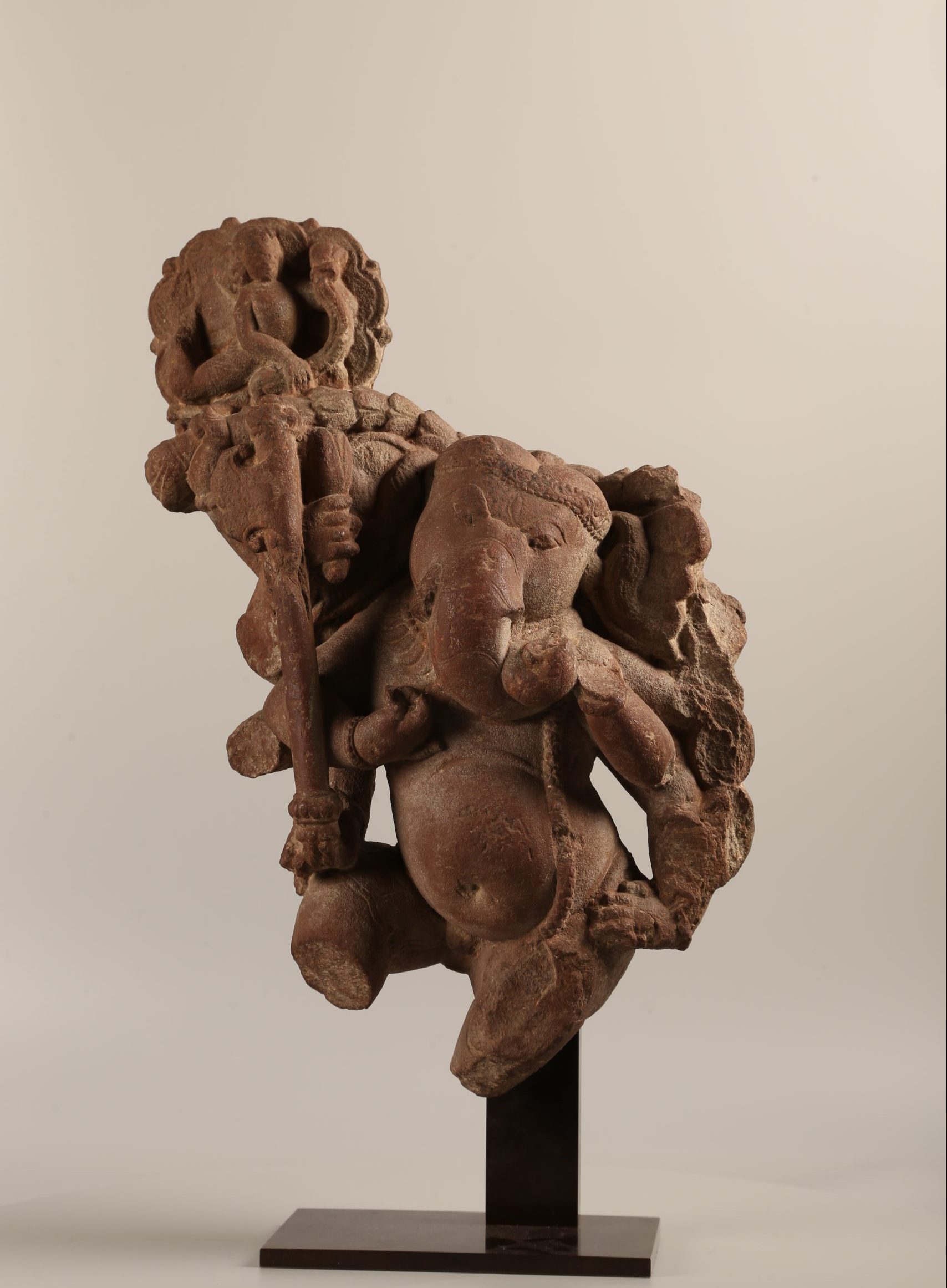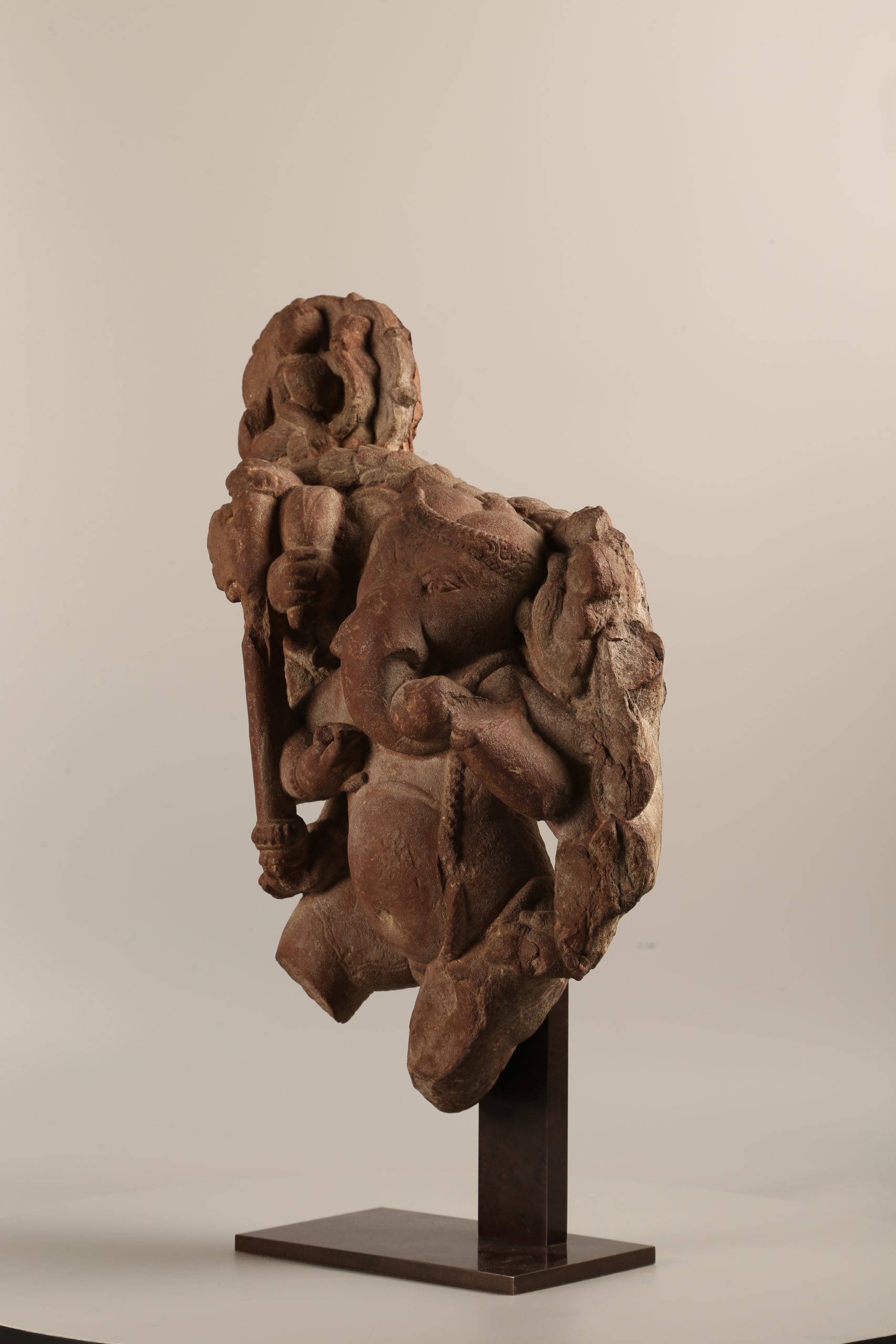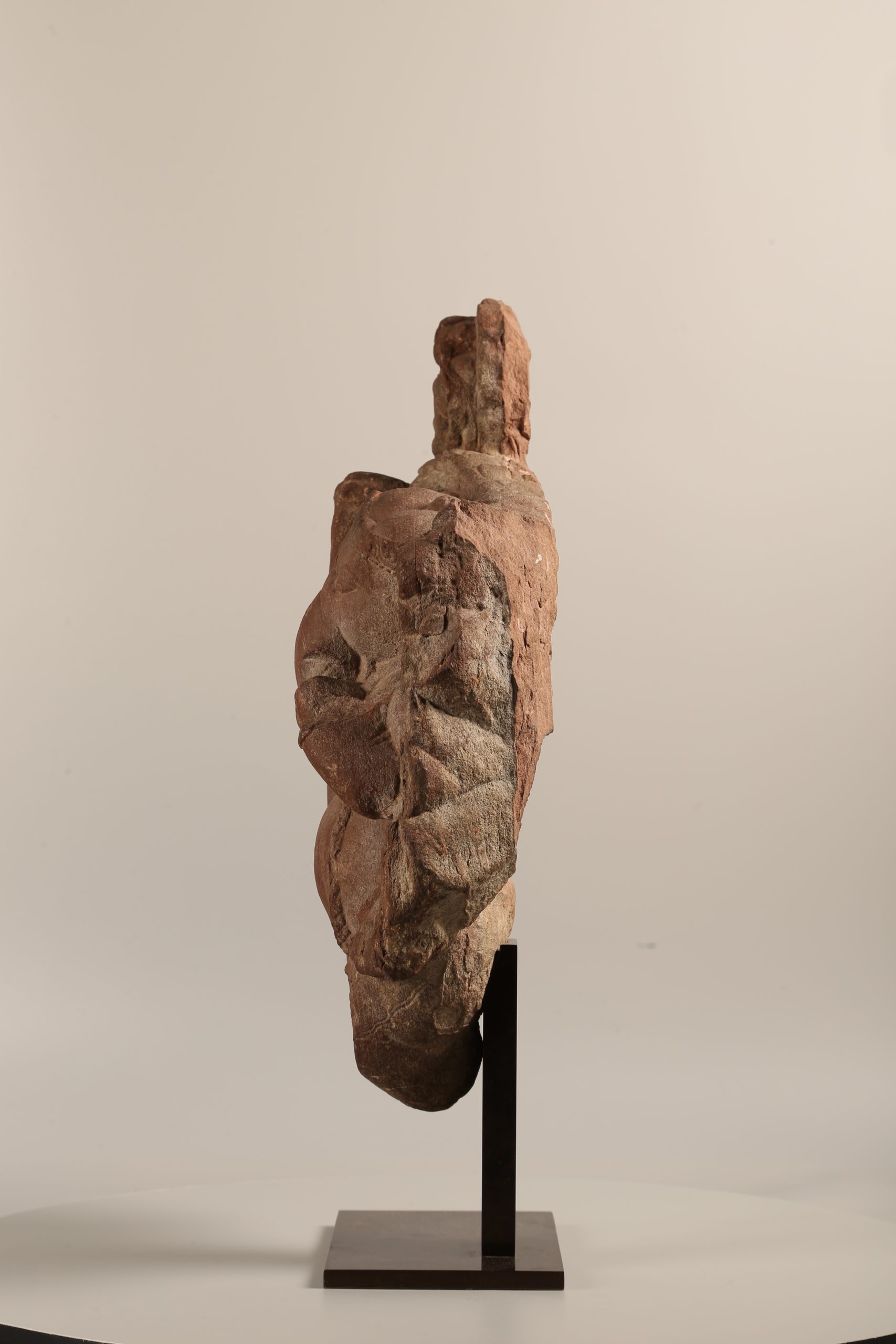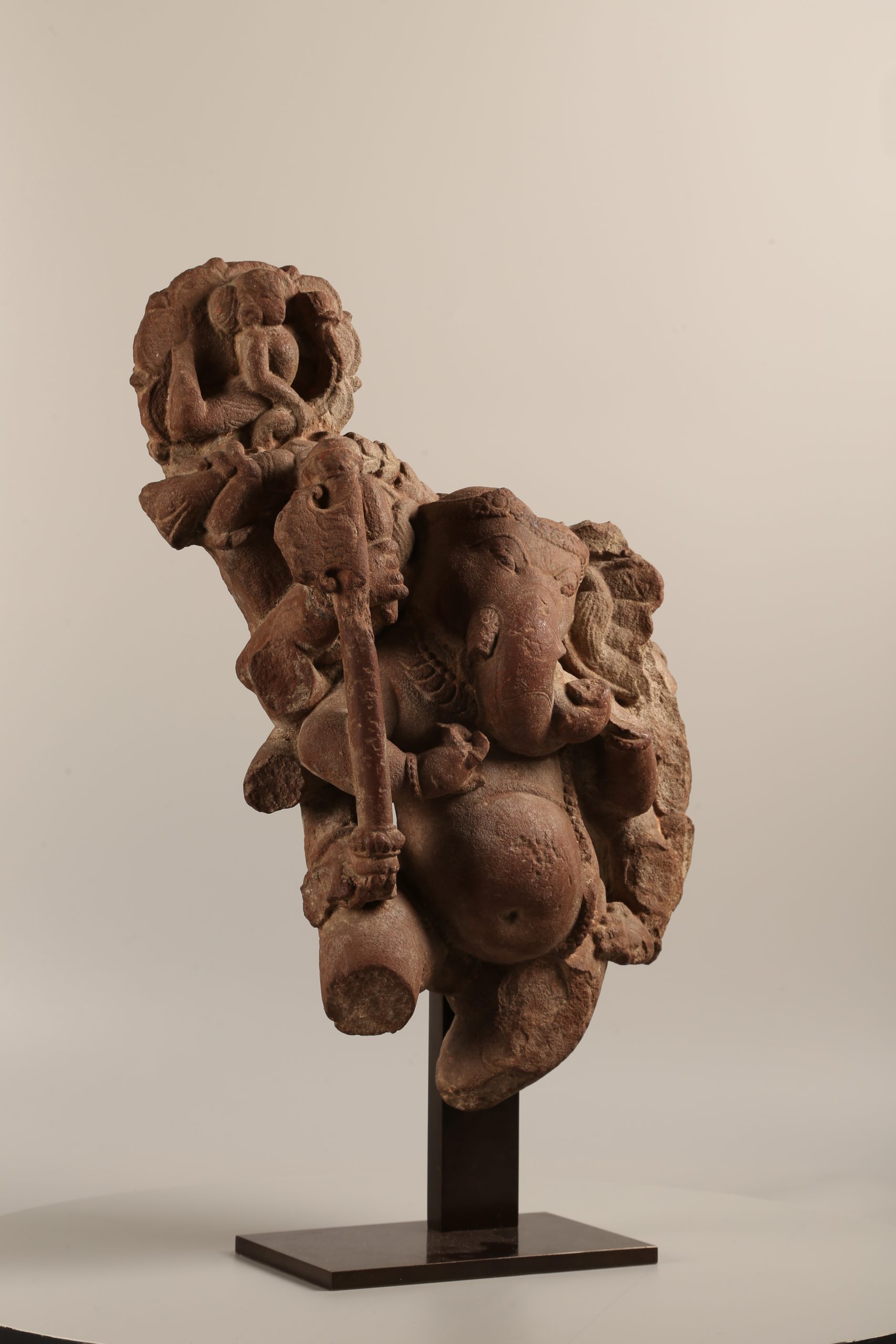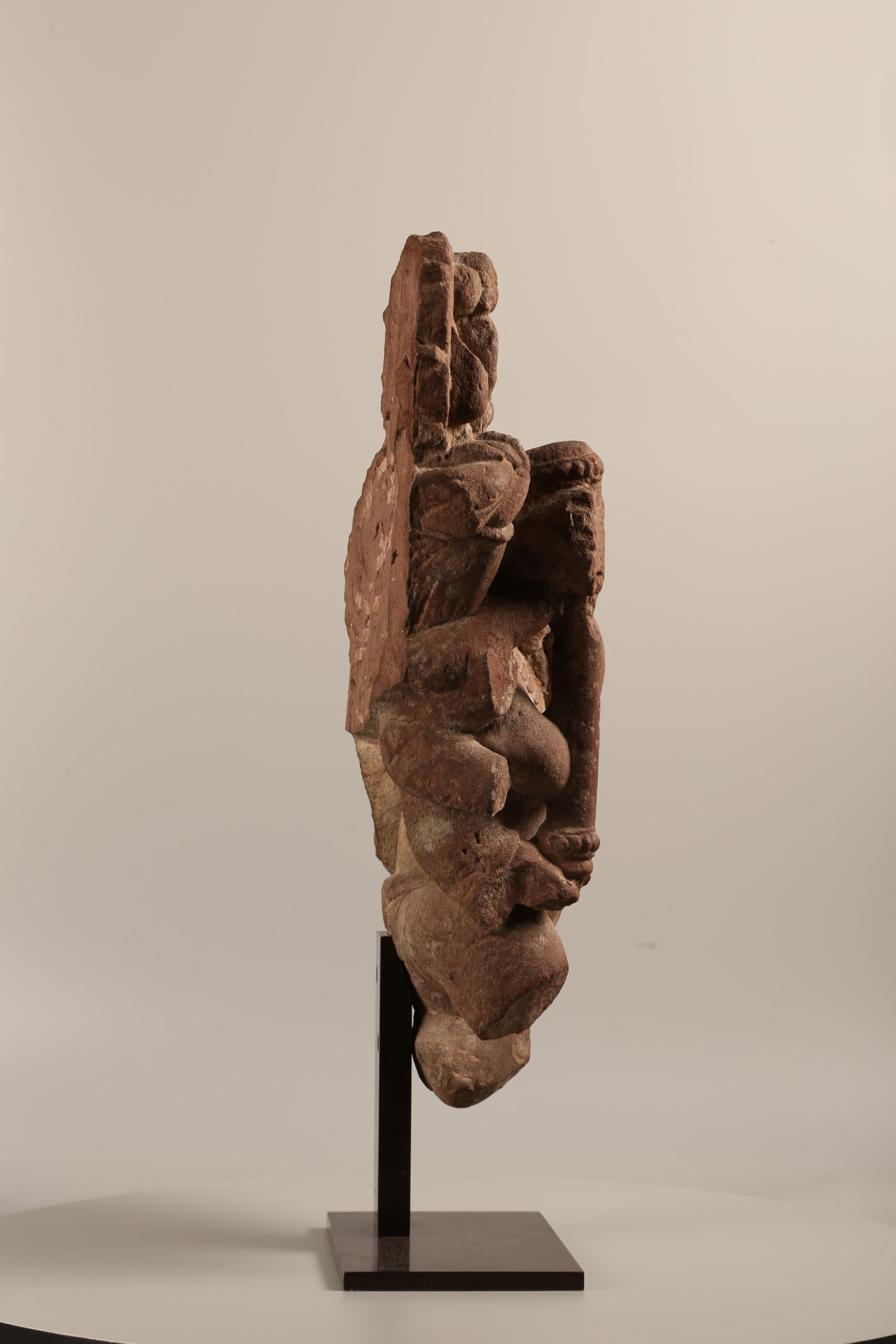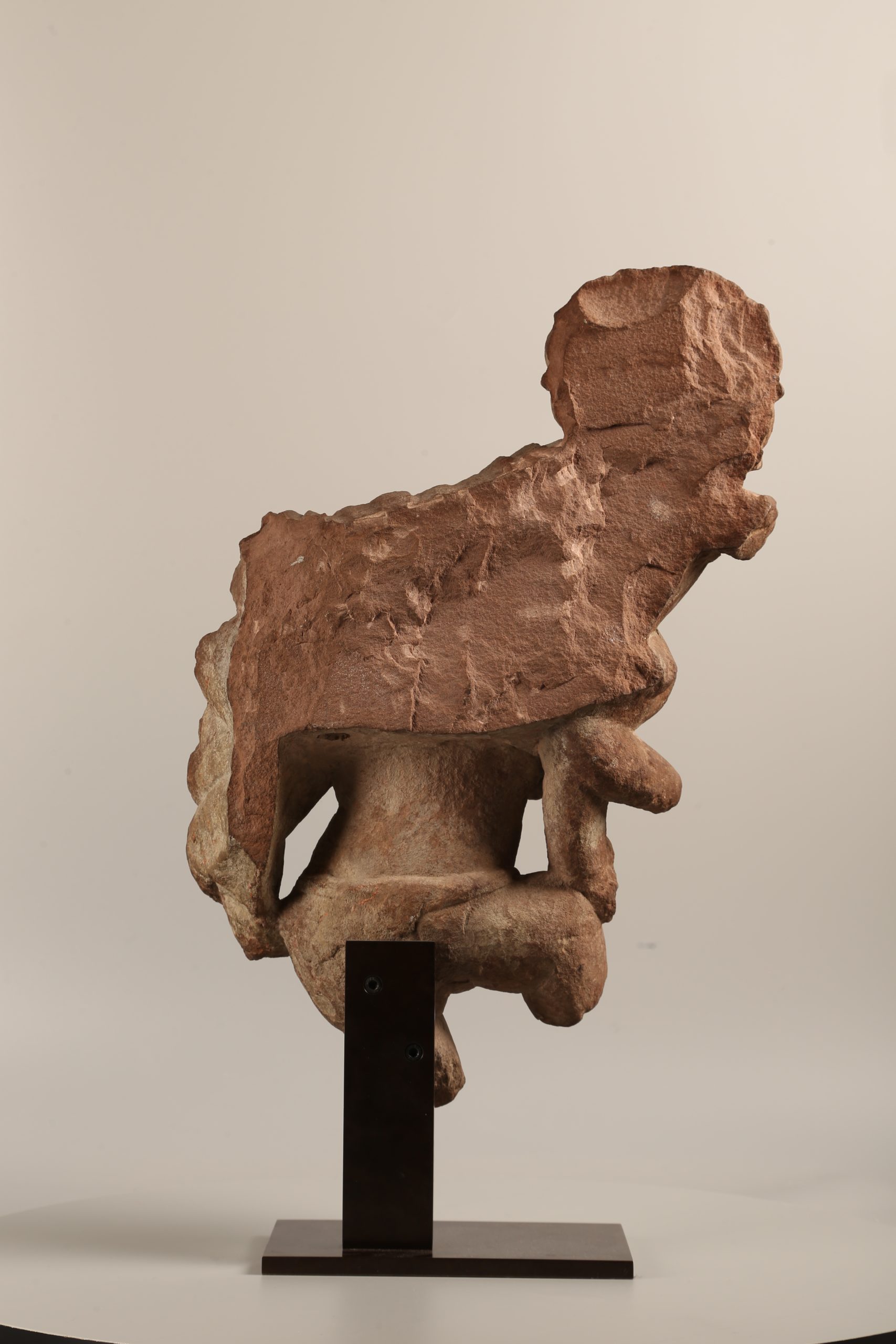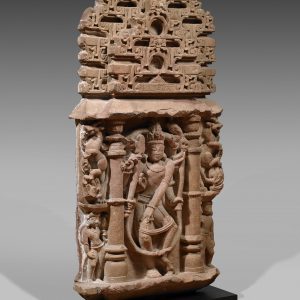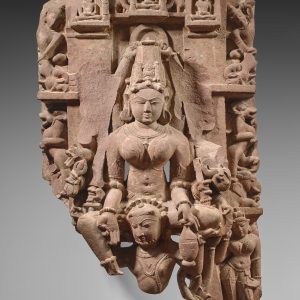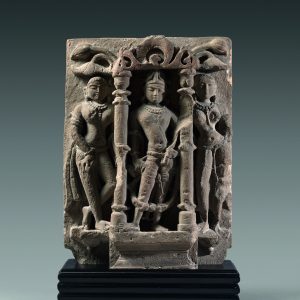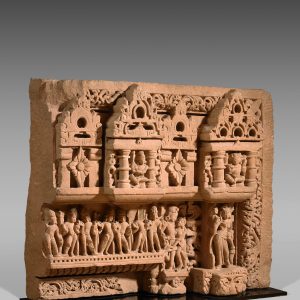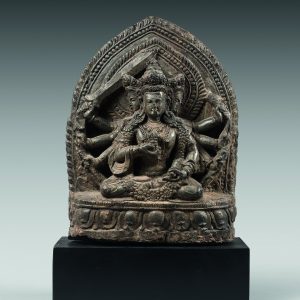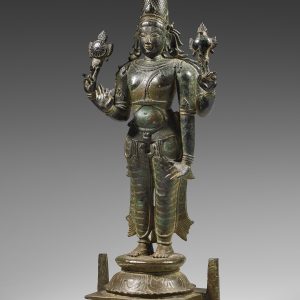Dancing Ganeśa
Sandstone
Central India
10th-11th century
H. 38 cm or 15 in
Video presentation
Detailed file
360° View
Description
The son of Śiva, this elephant-headed deity is one of the most popular gods in the Hindu pantheon, as can be seen by the great number of representations throughout the Subcontinent.
The animal head is intriguing, and only poorly explained by several legends that arose belatedly (not before the 7th century). According to the Śiva Purāṇa, the goddess Pārvatī, wife of Śiva, had her residence guarded by Vighneśvara, “The King of Obstacles”, which she made out of dust mixed with a bit of her own flesh. When stopped at the entrance to his wife’s chamber, Śiva decapitated the guard. Facing the wrath of his wife, he promised to give him life again, as well as the head of the first creature that came by. Which was an elephant, whose head he used. The composite being was immediately proclaimed the child of the divine couple. Assimilation by Hinduism of a pre-Vedic aboriginal cult, encountered by the Brahmans as this religion was constituted over the centuries preceding the Christian era, is the most probable hypothesis for the origin of the deity.
The god of the lower castes, with a great following in the countryside, Ganeśa is also worshiped fervently by most Brahmans, who – among other gods – offer up a prayer to him before every ceremony, because Ganeśa removes obstacles and makes rituals, as well as any human undertaking, run smoothly. He has only one tusk. He broke off the second to transcribe the epic saga of the Mahābhārata, which was dictated to him by the sage Vyāsa.
“Lord of the gaṇa”, he is the head of a troop of deformed dwarf musicians (gaṇa), singing and dancing to entertain Śiva and Pārvatī, especially after their wedding, when the young bride lies down next to her divine lover in his home on Mount Kailāsa in the Himalayas. That is why many sculptures, like this one, show Ganeśa as if he were dancing.
The god had many arms here, and two of his traditional attributes are clearly identifiable: the axe (Śiva’s classic weapon) and the cord, which is frequently seen in the iconography of the god who arose in the South. He could also be holding between the thumb and index finger a round sweet which the god loved.
Directly above the god, the representation of a vidyādhara emphasizes the benevolent character of the sculpture. Holding a lotus flower, the vidyādhara are beings with magical powers living in a wonderful world and throwing jewels or garlands to the deities.
We must point out the remarkable quality of the carving of this work, in particular by focusing on the details of the face, the trunk and the jewelry of the god. The strength of this representation lies in the extraordinary skill of the Indian sculptors who were able to convey such a feeling of lightness and movement to such a corpulent deity.
Provenance: Private collection, France; Indian Heritage Gallery, Paris; Private collection, France, 1987; Former Claude de Muzac collection, Paris.

